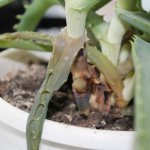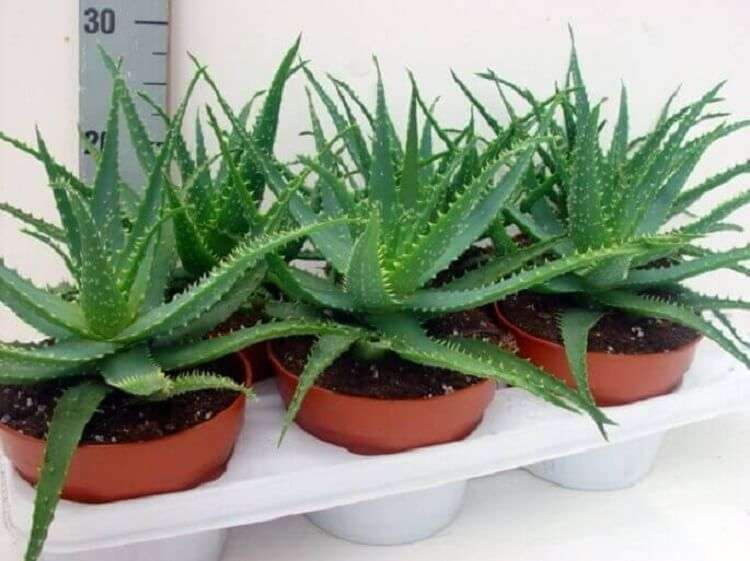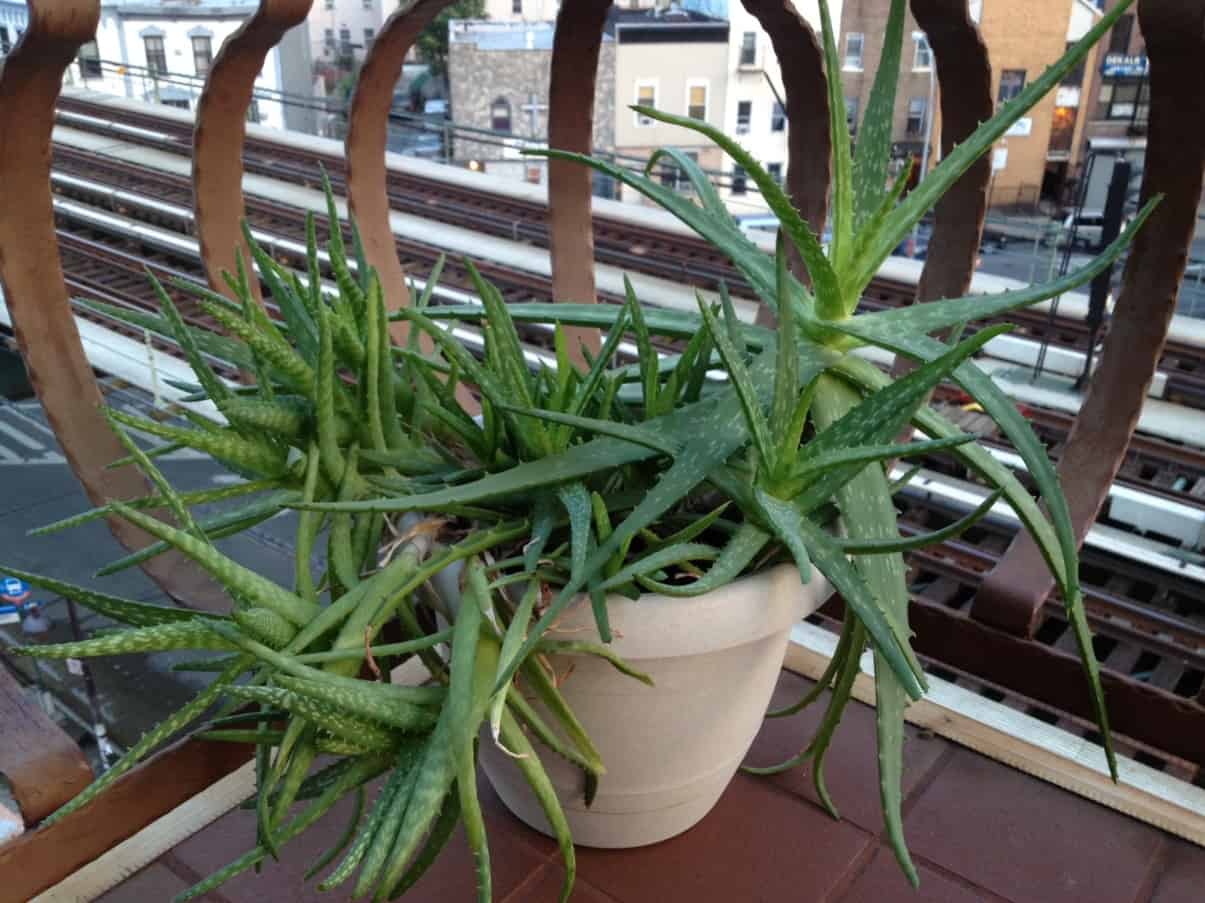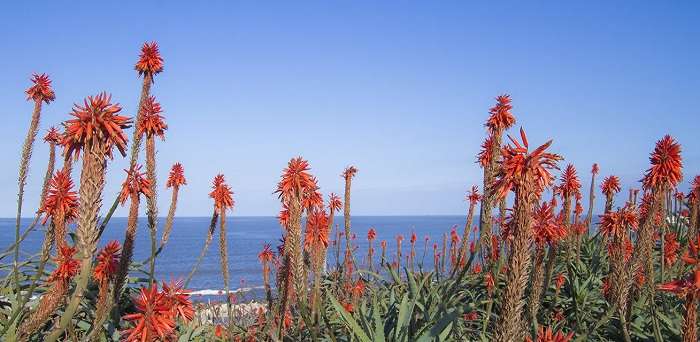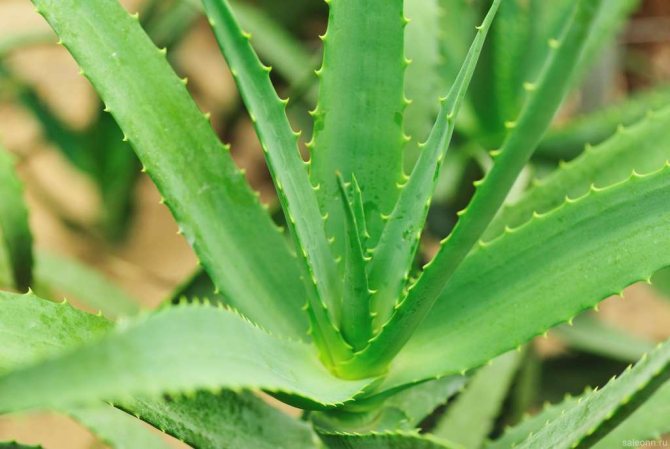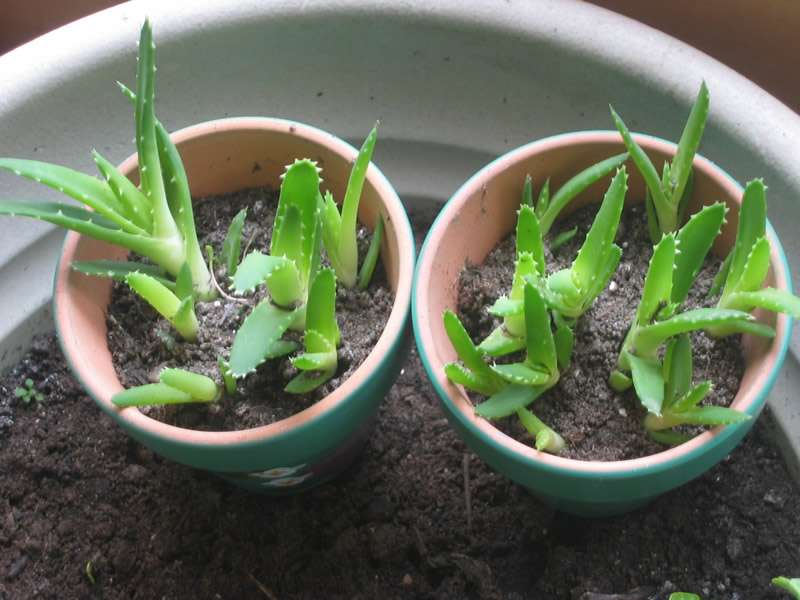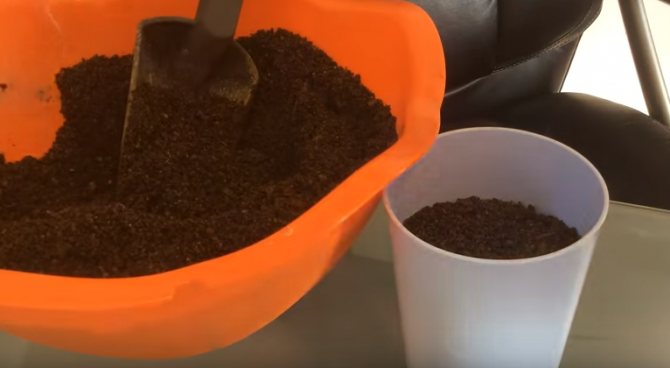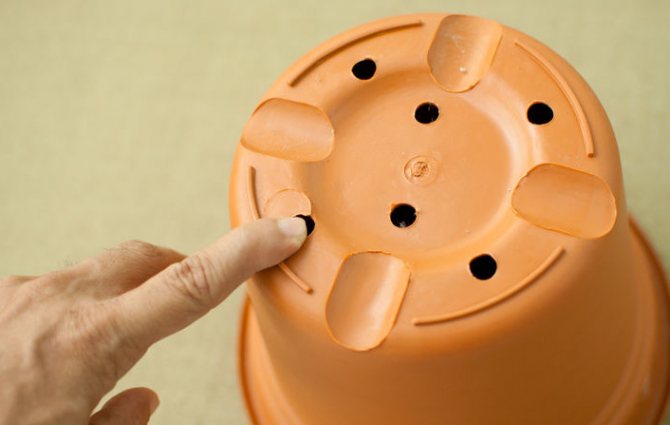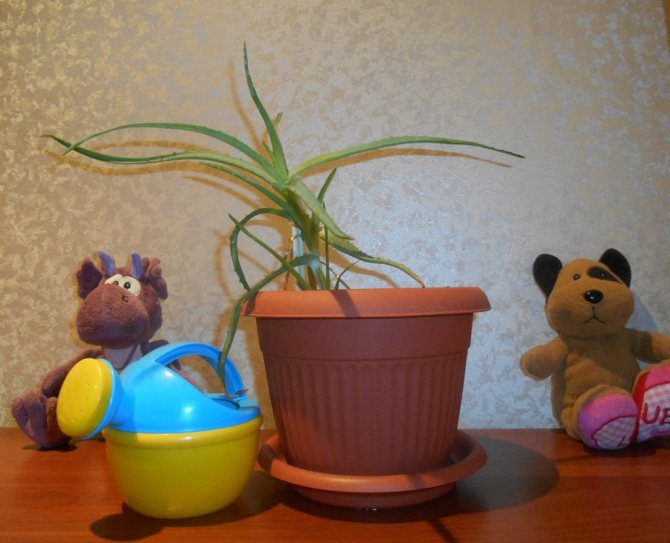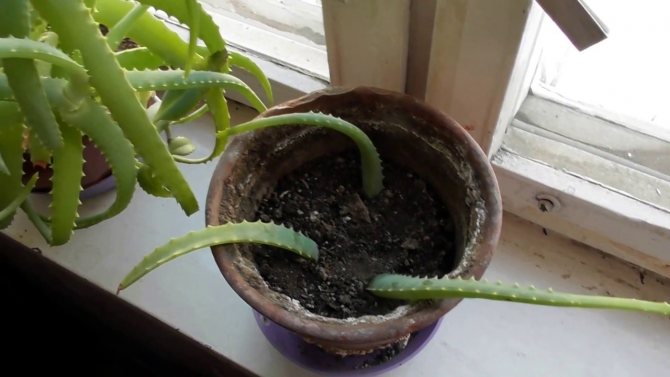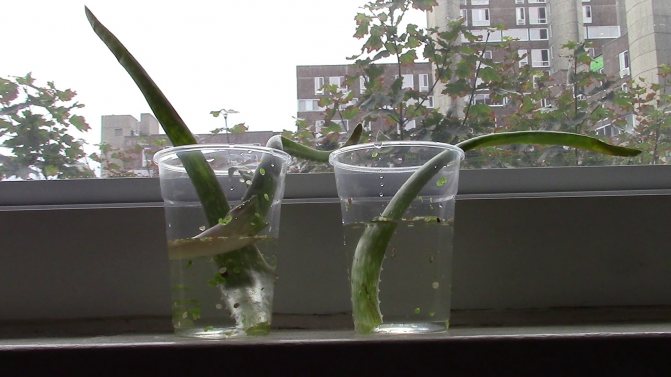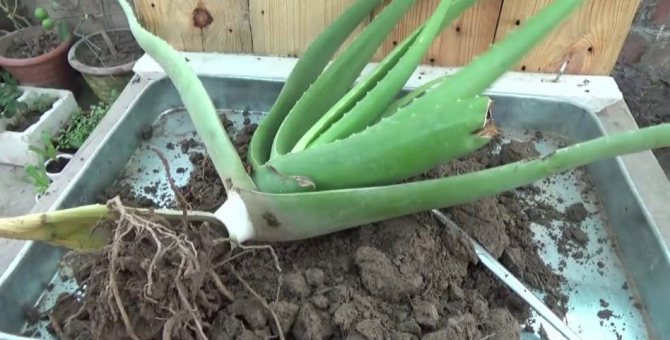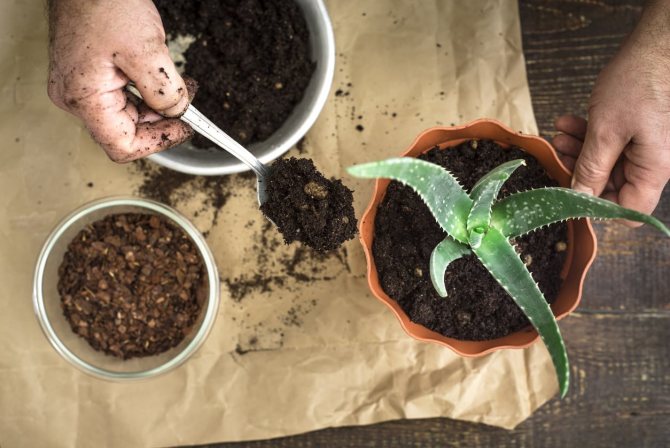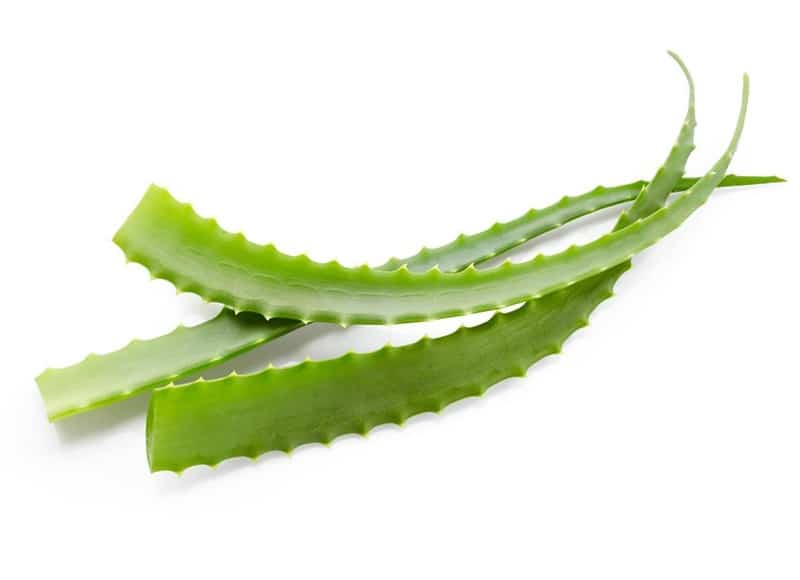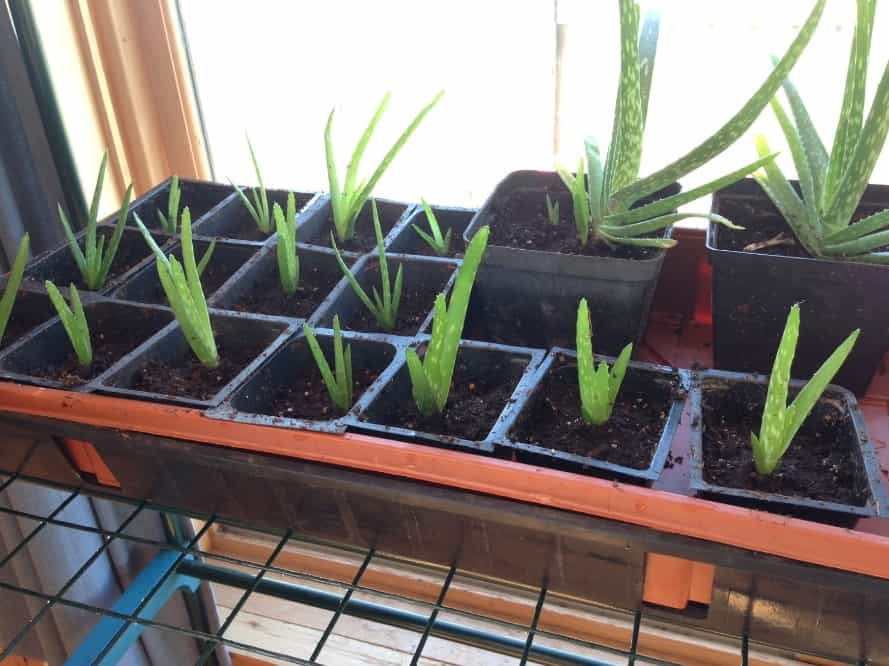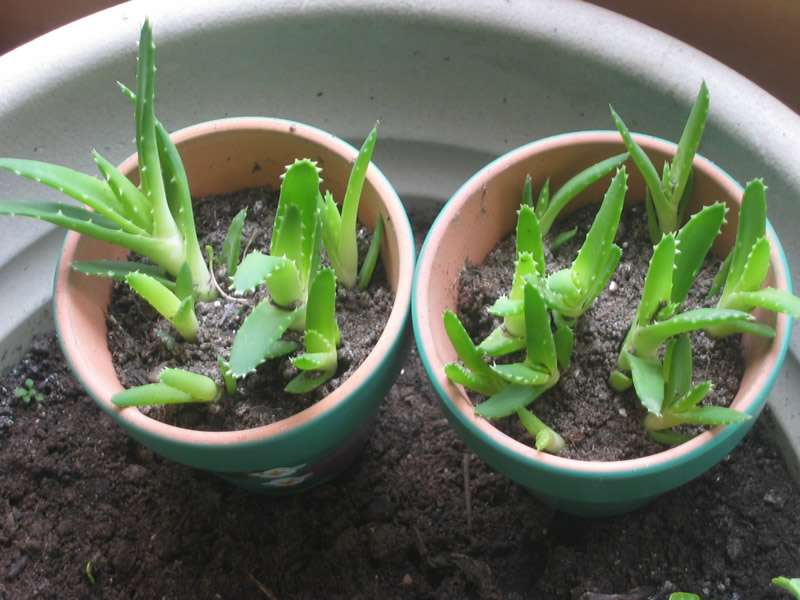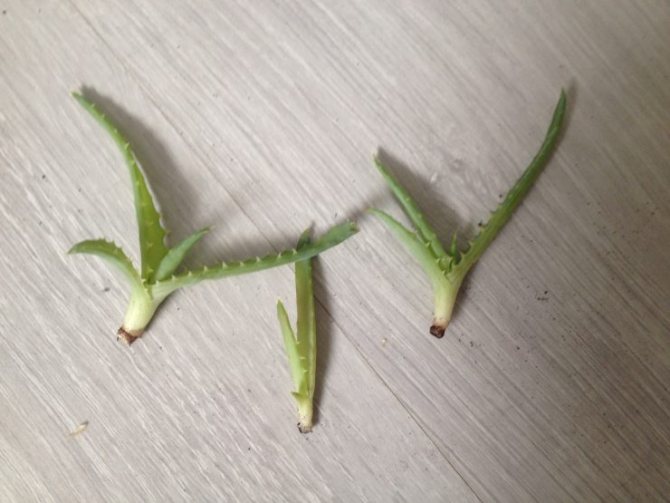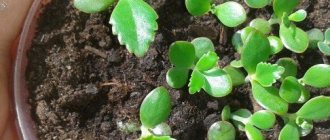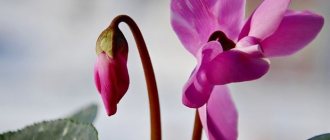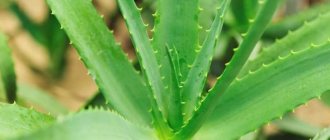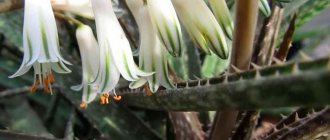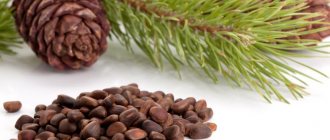A properly organized watering regime is an integral part of caring for representatives of indoor flora. Watering aloe - a leafy succulent - must be in accordance with certain rules, then it will delight you with a decorative look and help heal the diseases of its owner. An African guest can easily endure the drought, but will not forgive the grower for excessive irrigation. To avoid losing your green pet, follow the tips below.
Danger of excessive moisture
Aloe is a typical leafy succulent. In the wild, the exotic is widespread in the desert regions of Africa, the Arabian Peninsula, and Madagascar. The xiphoid leaves are collected in a spiral rosette and serve to store moisture. If you cut open an aloe leaf, inside you will see a fleshy pulp filled with bitter vegetable juice. Under the microscope, it resembles cells that serve to accumulate moisture. It rarely rains in tropical deserts, so the bush tries to collect the maximum supply of water. But with excessive watering, cell membranes begin to burst inside the leaf, putrefactive processes develop.
Fungal spores live in the substrate and, when combined with low temperatures and high humidity, begin to form mycelium. It is almost impossible to save aloe from them. Fungal diseases lead to decay of the root system, stems, leaves. If a problem is detected in time, an emergency transplant will help with the removal of all infected areas.
Advice
There are over five hundred varieties of aloe, differing in color, habit, size, but the technology for growing an exotic guest is the same for everyone.
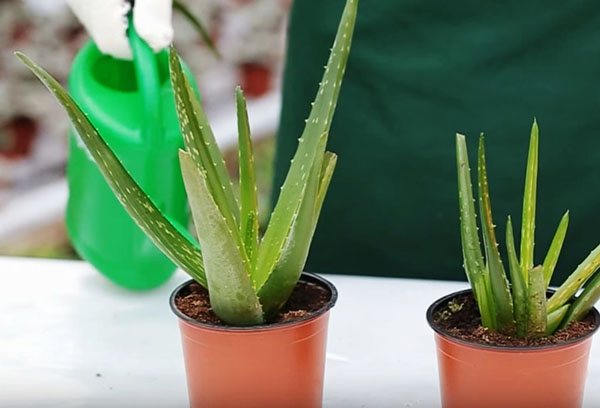
What if the plant does not take root
There are several reasons why a plant planted for rooting may not take root:
- the use of low-quality planting material - the material is cut from a diseased or weakened plant. In this case, the flower will have to be thrown away, and only healthy, strong and fleshy parts should be chosen for rooting;
- use of low-quality soil mixture - if you are not sure about the quality of a self-prepared substrate, it is better to purchase a special one (for succulent plants) and transplant aloe, such a manipulation should help rapid rooting;
- organization of improper care - non-observance of recommendations for the care of an unrooted plant often leads to the death of planting material. If the plant has died, you will have to re-select a high-quality young leaf and plant it, observing the regularity of watering and maintaining the required temperature in the room during the growing process.
How often to water?
The frequency of watering aloe vera depends on several factors:
- season of the year;
- plant age;
- conditions of detention - temperature, humidity;
- drainage quality;
- flower pot material.
To establish a regime of watering aloe at home, you should bring them as close as possible to their natural habitat.
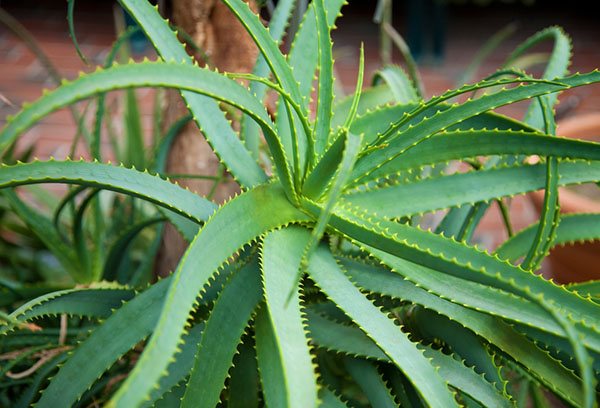

Irrigation during the active growing season
In the spring and summer, the exotic plant begins an active growing season. At home, several heavy spring rains allow the plant to make supplies in case of drought.
During this time, aloe requires abundant but sparse irrigation.From one watering to another, the earthen lump should dry out almost completely. Depending on the weather conditions (summer can be quite damp), the interval between irrigations can be from 3 to 10 days. To saturate the root zone with moisture, it is advisable to water the aloe by immersion, because the suction roots are located at the bottom of the pot. Young individuals are grown in a smaller volume of soil, so it dries up faster, they have to be watered more often.
Watering during the dormant period
In autumn, the growth processes are suspended due to the shortening of daylight hours. Aloe begins to prepare for the winter dormant period. The florist's task at this stage is to gradually increase the interval between irrigations. In autumn it is enough to water the substrate every 2-3 weeks. In winter, aloe is watered sparingly once every 30–45 days using a watering can. Irrigation is carried out in the morning so as not to freeze the roots. Such a regime is maintained only when a rest period is organized, which implies a decrease in the temperature background to 13-15⁰C. The African guest rests from mid-November to the end of February.
Advice
If your green pet is kept at the same temperature all year round and does not hibernate, in winter it is watered in the same way as in autumn - once every 2-3 weeks.
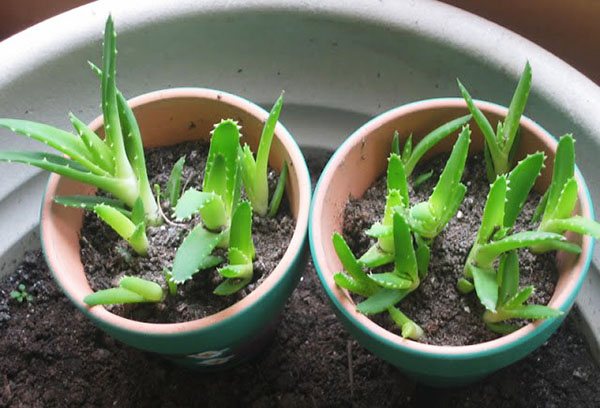

How does the frequency of watering depend on the chosen pot?
The material from which the flowerpot is made also affects the frequency of watering. Experienced growers prefer to grow aloe in ceramic or clay pots. Oxygen enters the roots through the walls of such a container, and excess moisture evaporates. This is a big plus, but in the heat you need to water the green pet a little more often and more abundantly.
A prerequisite for keeping aloe is the presence of drain holes in the bottom of the pot and a drainage layer of broken bricks, shards, expanded clay. In the absence of drainage, excess water from irrigation will accumulate in the root zone, which will certainly lead to the development of root rot. For the same reason, only a specialized substrate intended for cacti and succulents is used. It promotes the penetration of water after irrigation into the root zone, does not allow it to stagnate.
Other water treatments
It is impossible to spray the deciduous mass, the exotic is accustomed to low air humidity. If water droplets remain on the leaves, they can cause sunburn, which will ruin the decorative effect of your pet. From moisture entering the socket, putrefactive processes often develop. If you need to clean the leaves from dust, it is better to simply wipe them with a damp cloth, being careful not to erase the wax film.
Some gardeners advise to sometimes bathe aloe under a warm shower. This approach will refresh the leaves, get rid of dust, and help open the stomata. Bathing can be combined with the next watering, but after the procedure, arm yourself with a paper towel. Remove water droplets from the leaves, make sure that it does not remain inside the outlet. After bathing, do not expose the aloe to direct sunlight. You can resort to watering under the shower 1-2 times during the summer, in winter and autumn the event is contraindicated.
Preparing for landing
Consider the main methods of preparing the selected material for planting. Before sowing, aloe seeds are treated with potassium permanganate to disinfect them. To prepare the solution, use 0.5 liters of pure water and potassium permanganate - at the tip of a knife, stir the mixture thoroughly until it acquires a light pink hue. Soaking lasts 20 minutes, then the seeds are washed under running water and dried.
When using different parts of the flower for planting, they are pretreated for better rooting:
- when growing aloe from a cutting, it is cut into pieces 10 cm in length and sprinkled with all the cuts with crushed charcoal. The processed parts are left on a napkin at room temperature for several days to dry well;
- when cutting off the top from an old plant, they retain a length of 12 cm... The cut is treated with charcoal and left to dry for a couple of days, just as in the case of cuttings;
- growing aloe from a leaf also requires preliminary preparation of planting material. A young aloe leaf is used as a suitable material for planting; its length should be at least 8 cm. It is cut off at the base and treated with crushed coal. Leave the sheet in a warm place so that a dense film can form on the cut - this process can take from 2 days to several weeks.
Did you know? The healing properties of aloe appear only in the 5th year of the plant's life.
Optimal growing conditions
Aloe, like any other houseplant, requires special conditions for normal growth and development.
First of all, you should choose a suitable place for installing a flower pot, guided by the following recommendations:
- Aloe - light-loving plant, when placed in full shade, it can lose its decorative effect: its stems are strongly stretched. That is why the pot is best placed on the west or east window. You can place the pot on the south window, but be sure to shade it from direct sunlight to avoid brown burns.
- Air temperature indoors in the summer it should be at a level of + 18 ... + 25 ° С, and in winter, so that the plant does not suffer from the cold - not lower than + 14 ° С.
- Air humidity indoors it does not really matter for aloe, it can be any, but it is worth noting that an artificial increase in humidity by spraying the leaves from a spray bottle can provoke their rotting.
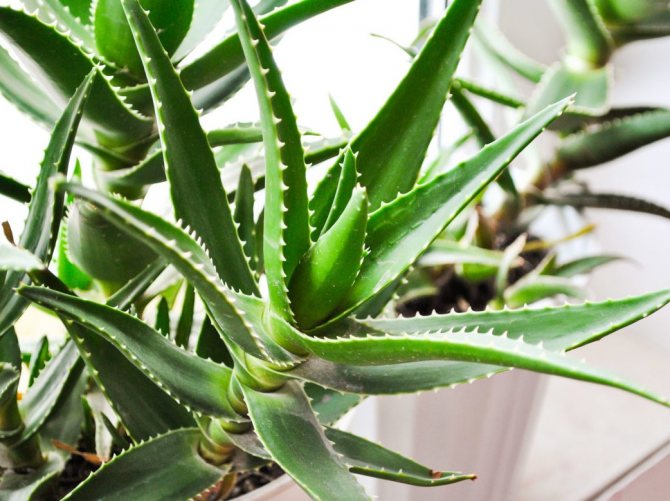

Capacity selection
Aloe can be grown in plastic or heavy ceramic pots. They must have a sufficient number of holes at the bottom so that excess liquid leaves the pot without hindrance, and the root system does not suffer from excess moisture. The size of the container is usually chosen in accordance with the size of the plant that is planted.
Important! Earthenware for growing aloe is usually not used, as it tends to evaporate moisture through the walls.
The pot should be short but wide enough. For small plants that are planted without a root system, in the hope that soon they will take the first roots, a pot 8 cm in diameter is suitable. When the aloe is well rooted, after 1 year, it is transplanted into a larger pot, choosing a size according to the volume of the root system, usually leaving 3 cm of free space on the sides.
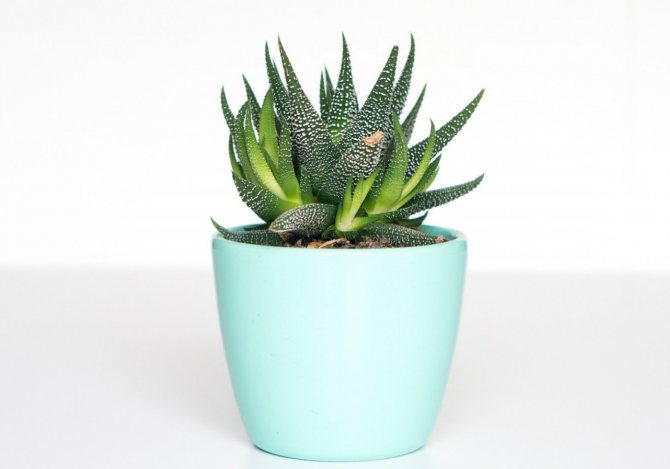

Soil preparation
Aloe can be planted in purchased soil (for succulent plants) or made independently by mixing different components: washed river sand, clay and humus. All components are taken in equal parts, mixed thoroughly and disinfected in a double boiler for 2 hours. Thanks to this treatment, all harmful microorganisms and fungal spores can be destroyed. The resulting soil remains sufficiently loose and breathable.
Important! After steam treatment, the soil mixture should stand a little, at least a week, so that a sufficient number of beneficial microorganisms that affect the normal functioning of the root system of plants are restored.
Aloe planting method at home
A particularly popular way of planting aloe at home is considered to be propagation by shoots (sprouts) without a root, allowing you to get a large number of new flowers from one plant.
From the sheet
When the cut aloe leaf has dried well, you can start planting:
- A little expanded clay is poured into the selected container (having holes at the bottom) and filled with an earth mixture.
- Aloe leaf is dipped in Kornevin to stimulate root formation.
- A small depression is made in the soil and the prepared sheet is vertically set with a cut down so that it plunges into the hole by at least 5 cm.
- Fill the hole with soil, tamping slightly to fix the planting material.
- Slightly moisten the soil surface with warm water from a spray bottle.
- Cover the container with a transparent jar to create a greenhouse effect and fast rooting.
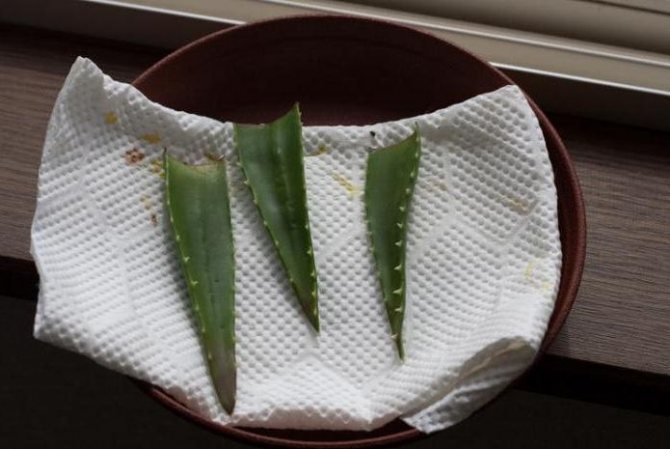

Cuttings
After the slices have dried on the cuttings, they can be planted:
- Clean wet river sand is poured into a long container.
- Small depressions are made in the sand (2 cm deep), keeping a distance of 5 cm between them.
- Cuttings are placed in the prepared pits, dipping the lower part in "Kornevin", and covered with sand, slightly tamping to fix the planting material in an upright position.
- The sand is kept wet while the plant takes root.
- After the start of the growth of the first roots, after waiting 1 week so that they are slightly strengthened, each cuttings are transplanted into a separate container with a substrate for succulents. At the bottom of 7 cm (in diameter) pots, expanded clay, soil are poured and cuttings with roots are planted.
Video: planting aloe cuttings
Tops
Let's consider how to properly plant the top:
- Wet river sand is poured into a small container.
- A hole is made in the sand, 5 cm deep.
- The lower part of the planting material is dipped in "Kornevin" and set in the hole.
- Fill the hole with sand, tamping slightly to fix the top.
- Since the flowability of sand can disrupt the stability of the plant, it is recommended to fix the top with a peg, which is buried as much as possible in the sand.
- When the plant is rooted, it is necessary to transplant it into the substrate, as is the case with cuttings.
Find out what kind of soil for aloe can be used at home and how to make a soil mixture with your own hands.
Seeds
To grow aloe from seeds you need:
- Prepare a soil mixture for sowing: mix 1 part of leaf, 1 part of sod land and 0.5 part of sand.
- Pour prepared soil into a long rectangular container and make shallow (1 cm) grooves.
- Seeds treated with potassium permanganate should be sown at a distance of 3-4 cm from each other.
- Soil is poured over the seeds so that all the seed material is covered with soil.
- The container is recommended to be covered with plastic wrap to create optimal conditions for seed germination.
- Every day, the film must be removed for 1 hour, and when the seeds germinate, they must be removed completely.
- When the seedlings grow enough and are 5 cm in height, it is time to plant them in separate containers, 6 cm in diameter, leave the soil composition the same.
- Expanded clay is laid at the bottom of the pots, an earth mixture is poured and each plant is planted in the center of the pot, then watered.
Video: planting aloe seeds
How to water aloe properly?
Experienced gardeners when watering aloe are guided by the only rule - it is better to underfill water than to fight diseases caused by excessive irrigation. How often to water a flower, we have already found out, now we will consider the technology of watering.
What kind of water does an exotic plant need?
In its homeland, aloe receives moisture through natural precipitation - rain and fog, so tap liquid is not suitable. It will have to be defended for a day and softened by adding a little lemon juice. It is not necessary to boil the liquid, this will reduce the amount of dissolved oxygen.
To obtain an optimal irrigation fluid, you can proceed according to the following algorithm.
- Fill any container with tap water and let sit for 12 hours.
- Drain the liquid gently into a clean food grade plastic bottle, taking care to avoid any sediment getting inside.
- Put the container in the freezer, wait until it freezes completely.
- Let the bottle thaw at room temperature.
- Wait until the water reaches the ambient temperature.
Such water treatment, although it takes a lot of time, is most suitable for a green pet. Florists advise adding a little aloe juice to the watering liquid. It removes harmful microflora and promotes good growth.
Advice
In winter and early spring, you can use melted snow for irrigation, just collect it away from highways and factories. In summer, rainwater is good.
It is not only the quality that is important, but also the temperature of the water. In summer, watering is carried out with a liquid heated to 25-30⁰C. In winter, prepare the water so that the temperature is 5-7⁰C above room temperature.
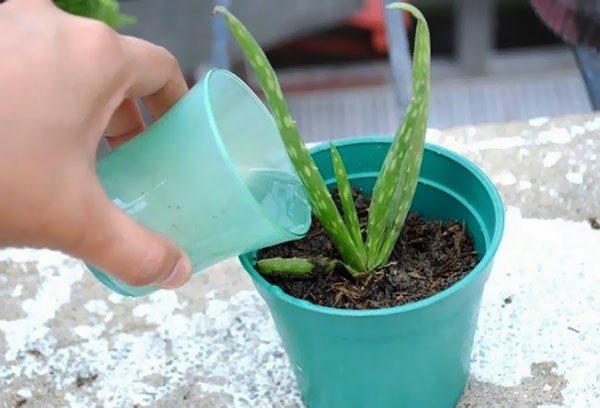

Watering from above
For watering from above, it is convenient to use a watering can with a narrow spout. Pour the prepared water into it, gently pour the aloe under the root, avoiding getting water on the leaves and inside the outlet. How much water needs to be poured depends on the condition of the soil and its volume. The earthen ball must be soaked through so that moisture gets to the suction roots. Pour fluid until it flows out of the drain holes. This usually takes 3-4 seconds. Do not forget to drain the excess from the pallet half an hour after irrigation.
Watering from below
Bottom irrigation is optimal for aloe, because with this method of irrigation, large roots are not overmoistened, nutrients are not washed out from the substrate.
Drainage irrigation technology
- Prepare a basin or bulky plastic container.
- Fill the container with prepared water. The liquid level should be about a third of the height of the pot.
- Place the flower pot in a container of water.
- Wait until the earthen ball is completely saturated with moisture. The surface of the soil in the pot should be wet.
- Remove the pot from the bowl, place it on the pallet.
- When excess liquid drains, drain it from the pan.
This irrigation method will save the fleshy leaves of the African guest from decay.
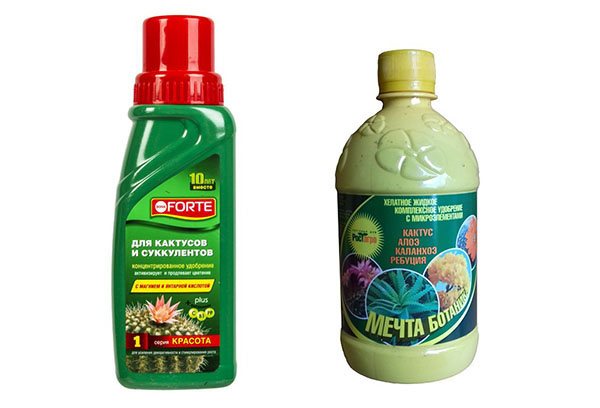

Potential problems during and immediately after boarding
The most unexpected surprise when planting an aloe is rotten roots. Even if there are even a few healthy roots left, the plant can be successfully reanimated. To do this, remove all damaged areas of the root system and immerse the remaining roots in a solution of an antifungal or antibacterial drug, depending on the causative agent of decay.
After that, the plant is left to dry for at least 4–5 hours, then it is planted in the substrate, but not watered. For 10-14 days, observe the succulent. If the putrefactive processes have not resumed, they moisturize very poorly and rarely until the flower is completely restored.
Another, no less common "surprise" during planting is the egg-laying of mealybugs between the roots. The plant is washed well in a soapy solution, turned upside down by the roots so that all the liquid is glass and does not remain in the leaf axils. The pot and the substrate are changed, the old ones are thrown away. The succulent is treated with an insecticide and planted in a new flower container. Watch to see if the worms have reappeared. Usually, one treatment, even the most thorough, is not enough, and the aloe is re-treated with another preparation.
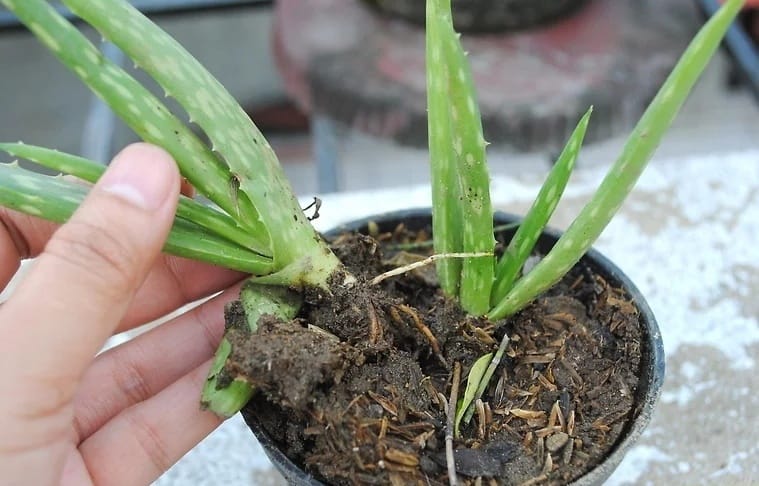

How to water aloe with fertilizers?
Aloe can develop normally without top dressing, because at home it grows in poor soil. However, many decorative varieties of culture have now been bred, and they need recharge to maintain their beautiful appearance. It is applied only during active vegetation - in spring and summer.
Fertilizers are usually applied along with irrigation. Ready-made mineral complexes designed for feeding cacti and succulents are suitable for aloe, but they must be used correctly.
Watering home exotic with fertilizers has several nuances.
- The purchased liquid fertilizer is diluted with water for irrigation according to the instructions.
- The use of granular fertilizers is unacceptable - you can burn the delicate roots.
- Fertilize the flower using the bottom watering method as described above. This approach will accelerate the absorption of top dressing and prevent soil salinization.
- Eliminate feeding for sick specimens, this can aggravate their condition.
- Do not water the aloe with fertilizers for a month after purchase and six months after transplanting.
- Be sure to water the soil with clean water before fertilizing. This will protect the roots from chemical burns.
- Do not allow top dressing to get on the leaves - the bush will get burned.
Advice
If you are growing aloe for medicinal purposes or making homemade cosmetics, you cannot water it with fertilizers.
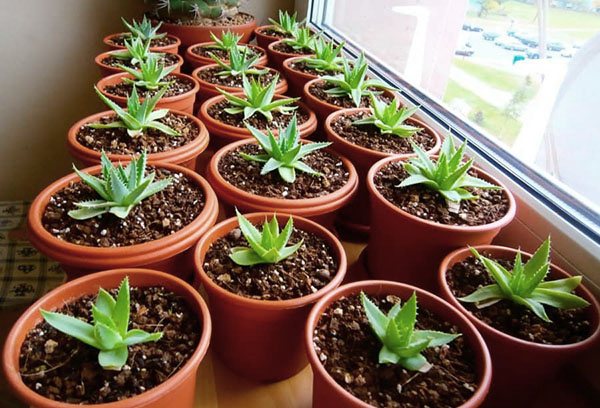

Aloe Vera in nature and at home
Before the aloe conquered our window sills, settling there under the name "agave", its habitat was hot countries - South America, Africa and the island of Madagascar, the Arabian Peninsula.
True, we might not recognize the plant if we met it in its natural environment - it is very different in appearance from the flowers we are accustomed to with watery green leaves. Wild specimens reach fifteen meters in height, release a long arrow from the rosette of leaves, at the end of which you can see a fiery red or bright yellow flower. Unfortunately, some species, such as Helena's aloe and Suzanne's aloe, are threatened with extinction.
In countries where aloe is grown professionally, whole hectares (about 15,000 plants per hectare) are planted with it, and the leaves are harvested no more than three times a year. The use of pesticides to fertilize the soil is strictly prohibited.
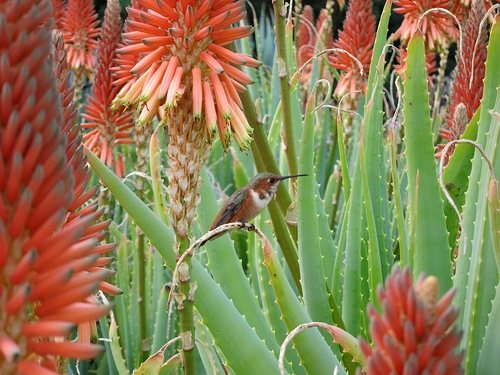

In nature, aloe reaches 15 m in height
Botany has more than five hundred plant species. At home, we can grow aloe vera, tree and others. They are about equally simple to care for.
Aloe species
- Aloe Vera (Barbados). The plant has a short stem, on which there is a rosette of juicy and hard leaves. Forms an inflorescence like a brush and forms a peduncle up to 90 cm long. It blooms with yellow and sometimes red flowers.
- Aloe is tree-like. The tall stem of the plant forms many shoots, has narrow and rather succulent leaves.
- Aloe folded. A small tree with a short trunk, on which 10–16 elongated leaves grow.
- Aloe is terrifying. The plant is distinguished by fleshy and thick leaves, with small reddish-brown thorns. It blooms with scarlet flowers, collected in a spike-shaped inflorescence;
- Aloe spinous. The plant is characterized by large, numerous and thick leaves with soft and transparent thorns. A white border runs along the edge of the leaf blade.
Photo gallery: species diversity of aloe
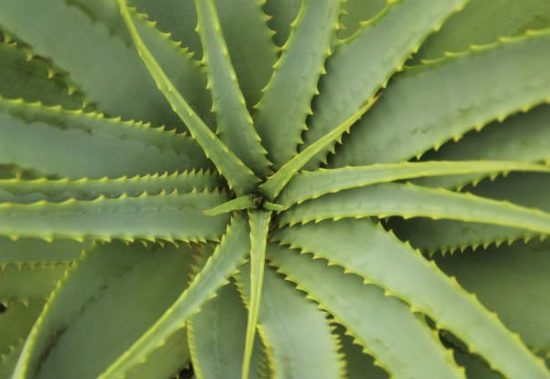

The second name of aloe vera is Barbados
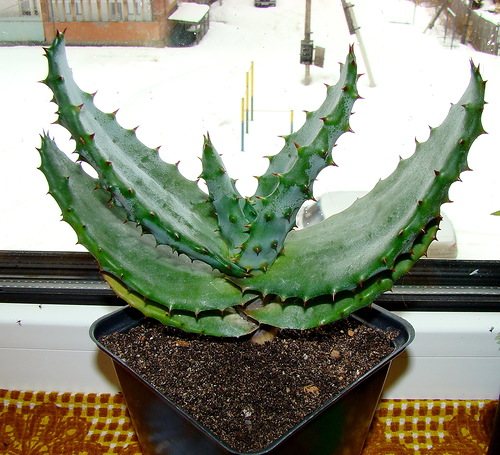

Distinctive feature of aloe intimidating - reddish-brown thorns
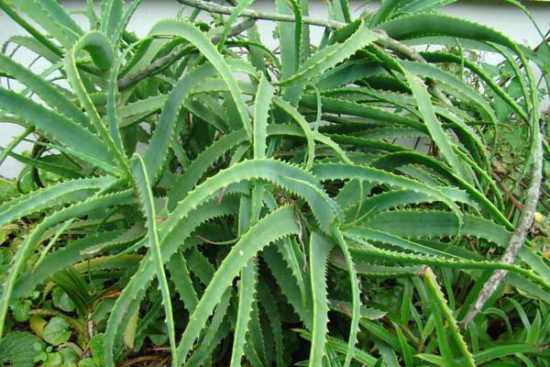

Aloe tree-like in indoor conditions can grow up to one meter in length
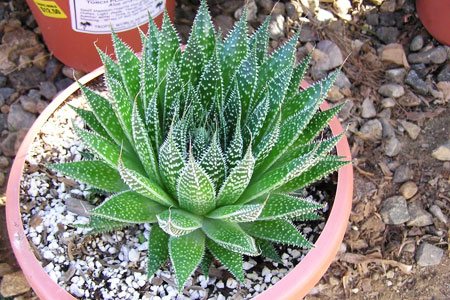

Along the edge of the leaf in spinous aloe, there is a white border
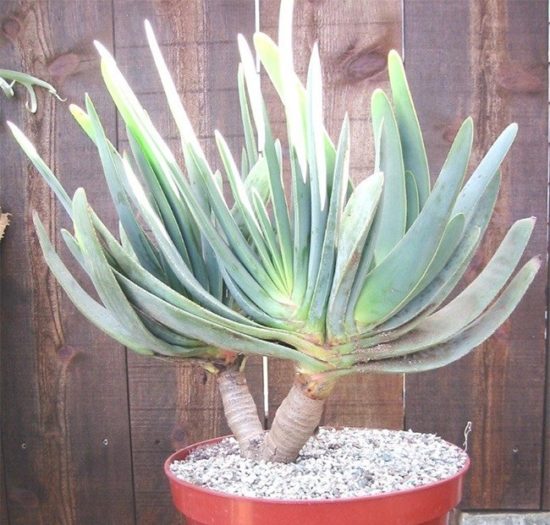

Aloe folded is a small tree
When to water aloe after transplanting?
As the indoor exotic grows, an ever larger area will be required. Transplantation of young specimens is carried out annually, mature specimens over four years old change their "living space" every 3-4 years. Healthy plants are transplanted by the transshipment method, excluding the violation of the integrity of the earthen coma. It is best to hold the event after the end of the dormant period, by mid-spring.
- Two weeks before the intended transshipment, watering of aloe must be completely excluded, this will facilitate pulling out the root system from the old container.
- Gently tap the sides of the pot, tilt it and try to remove the plant. If you fail, take a long-nosed watering can and slightly dampen the soil along the sides of the pot.
- Transplant the bush into a new container - 2-3 cm more spacious than the previous one.
- Do not forget about a suitable substrate and drainage layer.
- After transshipment, water the soil abundantly, top up the substrate if necessary.
- The next irrigation is carried out no earlier than in 5-7 days.
In case of illness, the plant will need an emergency transplant with the removal of rotten roots. Such a measure is often required when there is excess irrigation. If the soil in the pot of aloe begins to turn sour, remove it from the substrate. Gently rinse the roots, remove all decayed parts with a sterile knife. Powder the slices with charcoal, let dry a little. Plant the bush in fresh soil. After an emergency transplant, do not water the aloe for 4-5 days.
Knowing how to organize the correct watering of aloe, you can easily grow this unpretentious plant. If you follow the recommendations described above, you will not have to fight for the health of your green pet.
Planting dates for aloe
There are no clear dates for planting different parts of aloe without a root system - they are usually well accepted if you create suitable indoor conditions. However, some growers argue that the period of activation of the natural processes of sap flow, which falls in early spring, is optimal for planting a flower.
During this time, the chances of rapid establishment are much higher (roots grow within 2-4 weeks), which makes it possible to get a strong and healthy plant as a result. If the cultivation of aloe will take place through seeds, sowing is best done in late February - early March.
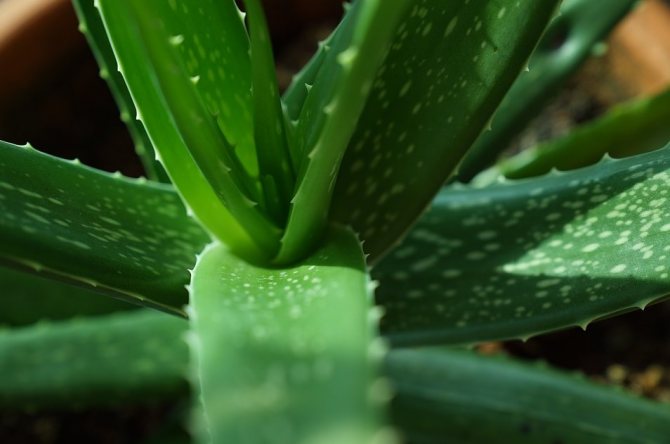

We select the pot
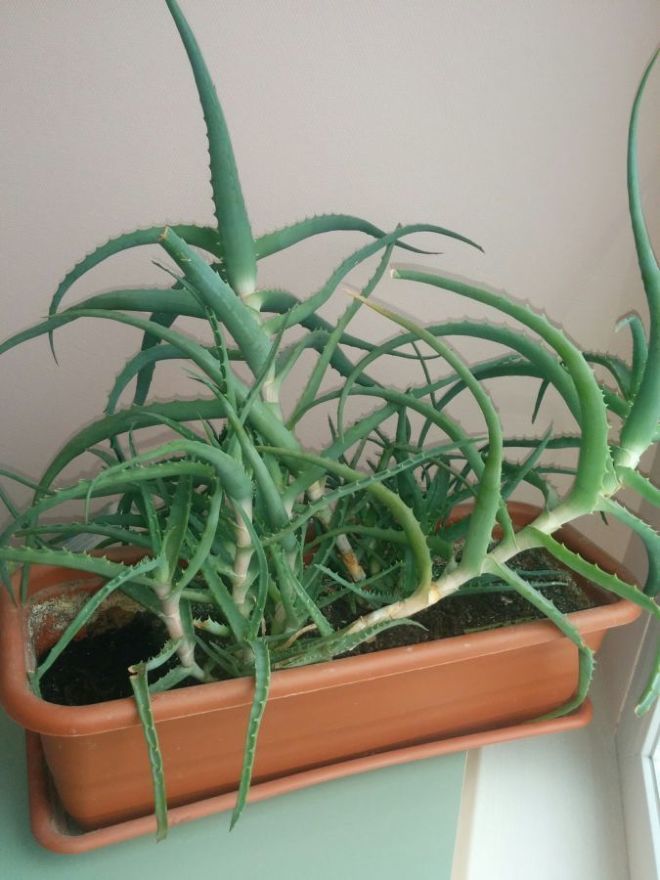

The first thing to pay attention to is the material from which the pot is made. Most often it is plastic or clay. The first is cheap and light, but its inability to pass air can be detrimental to the root system. So the pot must be earthen.
The shape does not matter, but the size and diameter must be selected depending on the volume of the roots and the height of the plant. For example, caring for indoor spinous aloe requires a shallow bowl of large diameter, since this succulent (the so-called plants that have special tissues for accumulating water) has a superficial root system, and a tall tree-like aloe (the plant reaches a meter in height) needs a deep pot.
Proper care of aloe requires one or more holes with a diameter of 1-1.5 cm in the container, through which excess moisture will leave. Before planting, old pots must be thoroughly washed with soap and water, and clay pots should also be calcined in the oven to kill harmful microorganisms.
Popular types of aloe for growing at home
The most popular type of aloe that can be found in almost every apartment is tree-like. Narrow fleshy leaves of this type are used for medical purposes and for cosmetic procedures. With proper care, Aloe arborescens grows up to a meter in height, forming a gorgeous bush. There are thorns only on the leaves, the stem of the flower is smooth, more rigid at the bottom and softer at the crown of the plant. If the flower is not looked after correctly, it begins to rot, the color of the leaves becomes faded, the tips may turn yellow and dry.


Aloe tree
Aloe vera grows up to half a meter, leaves with thorns, but wider than those of the tree, slightly corrugated, bright green. The stem is shortened, the leaves are collected in spirally twisted rosettes. Aloe vera is considered to be one of the most useful plants for humans.
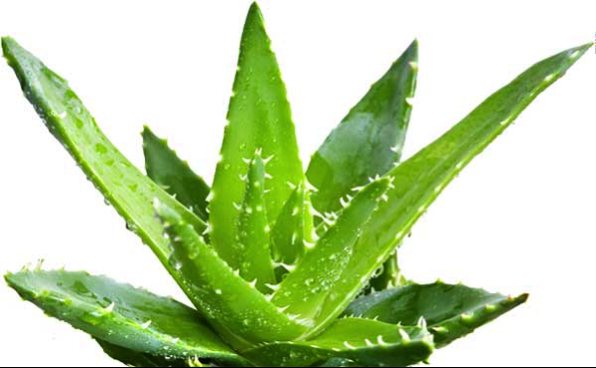

Aloe vera
Variegated aloe is a decorative type of plant that grows to a maximum of thirty centimeters in height. A healthy plant has dark green leaves with irregular white stripes, soft thorns may be present but not required. The leaves are twisted in a spiral, the trunk is very short.
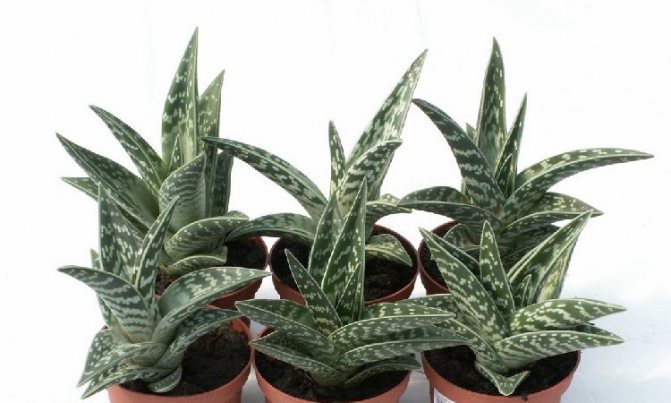

Aloe variegated (tiger)
Spinous aloe is a beautiful decorative succulent, similar in shape to variegated aloe, but instead of white stripes there are small dots on the leaves, and the entire surface of the latter is rough with spines at the tips. The flower of the plant is bright orange, the maximum plant height is 20-30 cm.The plant is unpretentious, but requires proper watering and care along with other types of aloe.


Aloe spinous
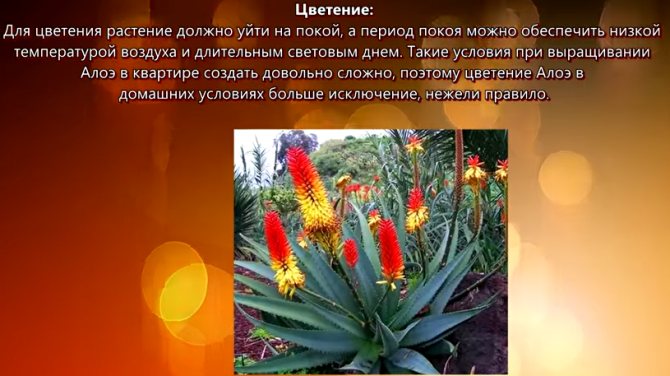

Aloe bloom
Video - Aloe Vera
Breeding methods for aloe
Aloe is propagated in three ways:
- By division;
- By cuttings;
- Seeds.
At home, aloe is recommended to propagate only by dividing or grafting methods. This primarily applies to decorative species and hybrid forms. In principle, these plants can also be grown from seeds, but this method takes much more time and is not always successful, therefore it is rarely used.
Most species of aloe, reaching "adult" age, begin to grow and release basal shoots. As a result, small young plants appear next to the mother. In herbaceous forms, new leaf rosettes grow, and in tree forms, accordingly, stems with small leaves.
The roots of the plant give after 3-4 years. They begin to germinate in early or mid-summer when the aloe continues to grow actively. For some time, the "kids" are allowed to grow and grow stronger next to the mother specimen, after which they are transplanted into separate flowerpots. They do this either in the spring or next summer. Separating shoots in autumn or winter, when they begin a dormant period, is not recommended. Plants may die as a result of separation and transplantation.
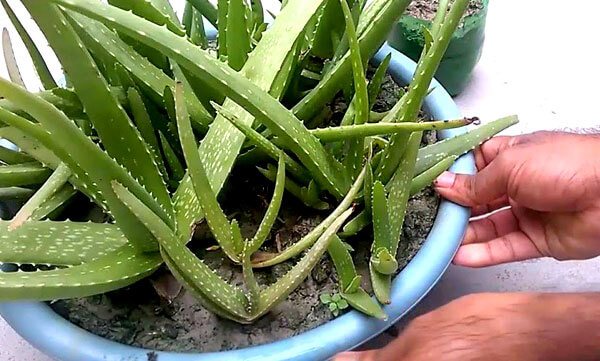

A lot of bushes obtained by planting basal processes.
To separate young shoots:
- Aloe is first watered abundantly;
- Then the whole plant is removed from the flowerpot;
- Taking the aloe out of the pot, gently shake the earth from its roots;
- After that, the roots are separated, highlighting the shoots that connect the adult plant and the young. They are neatly cut in the middle;
- Then the plants are planted in new soil and in separate flowerpots.
In some cases, young shoots are separated without replanting an adult aloe.
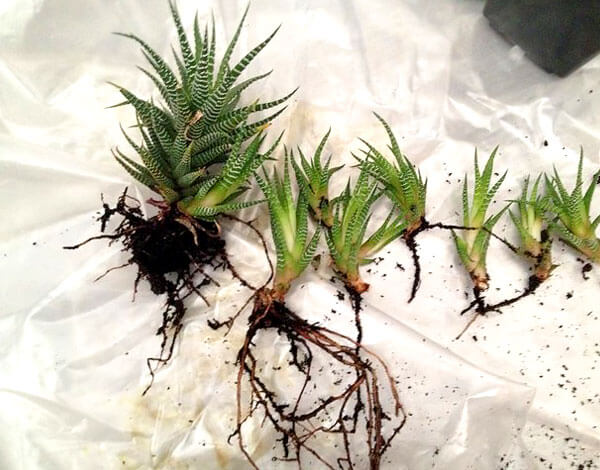

The second way to propagate aloe is by cuttings. The leaves of the plant or the tops of its branches are used as cuttings. This method is a little more complicated than the previous one, but with its help it is also almost always possible to grow new aloe.
To reproduce aloe in this way:
- The largest and most completely healthy leaves or apical shoots are selected;
- Cut them as close as possible to the stem;
- Leave for a day or two in a dark and cool place;
- Check if a small film has formed on the cut;
- Then the cuttings are placed in a rooting substrate with a cut downward 3-5 cm;
- The plant takes root, usually within 2-3 weeks.
To root cuttings, it is recommended to use special substrates sold in specialized stores. However, for these purposes, ordinary soil for growing succulents is also successfully used.
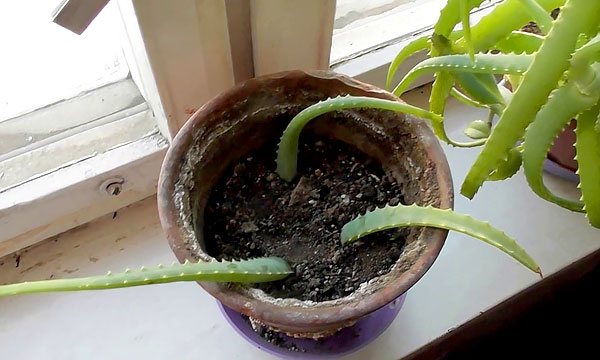

Not all of these cuttings survive, but given the simplicity of this method, it is the most effective.
On a note
It is known that a leaf of an agave, if broken off and placed in water, will soon release roots. Many do the same with other plants of this genus, but they do not get the desired result. In fact, only the agave gives roots in water, while other types of aloe do not.
If there is no way to get a shoot or cutting of aloe, you can try to grow it from seeds.
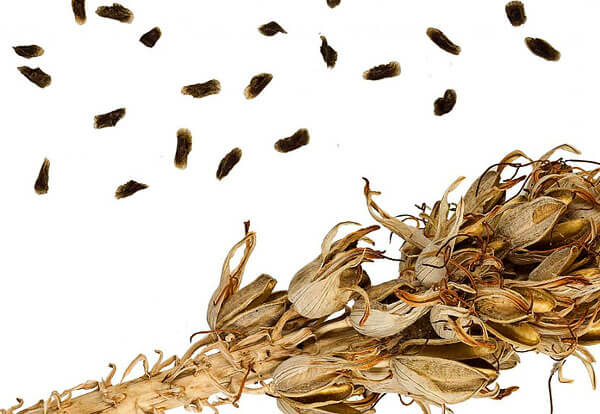

Dried flower stalk and aloe seeds.
For this:
- They are first stratified by keeping them in moisture at low temperatures for several months;
- Then the seeds are sown into the ground to a depth of about 1.5-2 cm;
- The soil is moistened, and a piece of transparent glass or cellophane is placed on top of it;
- Place the container with seeds in a warm and sunny place;
- Shoots appear in 10-21 days;
- After that, the glass and film are removed;
- When the sprouts grow, they are seated in separate containers.
It is also useful to read: What is the difference between aloe and Kalanchoe
When growing their aloe seeds, it must be borne in mind that not all of them will sprout, and, perhaps, there will be no shoots at all. There is also a risk that the appearance of the plant will differ from what is expected.
Flowering plant
Aloe bloom is truly a grand event. And all because at home the agave very rarely pampers his household with such a beautiful sight. The mass flowering of several aloes is like a fire: bright orange large cone-shaped flowers immediately catch the eye and catch the eye.
Many amateur flower growers who have not watched live aloe flowering are wondering: is it possible to make a plant bloom, how to provide it with conditions in order to at least slightly increase their chances of contemplating this event. The conditions for this are simple, but their fulfillment is not always successful. However, you can try to increase your chances of winning if:
- the plant will overwinter in a dry room at a temperature of about 15 ° C;
- in spring and summer, aloe will not lack fertilizer;
- additional treatment against parasites and ticks will be periodically carried out;
- will not be influenced by aggressive neighboring plants.
The rules are quite simple, and their implementation may well bode well.
If, nevertheless, the aloe bloomed, you should know that during this period the plant does not need any special care. It is only necessary to occasionally remove its dried flowers.
Illumination, temperature
In nature, succulent grows in areas with a warm and dry climate: in Africa, Madagascar, on the Arabian Peninsula. This must be taken into account when providing aloe care at home. It is better to grow a flower in a house at a temperature of 22 to 26 ° C, it can be safely placed on a windowsill from the south or east side.
The sun is the source of life for aloe, which determines its growth rate and appearance. For example, the leaves of the awned aloe, which grows in a well-lit place, have a bright dark green or even brown color. In a dark corner, the plant takes on a light green color and never blooms. At the same time, an excess of sun will also not benefit the succulent: direct rays can cause a burn in the plant.
So that the trunk of the aloe is strong, and the leaves are large and bright, it is useful to take it out to the balcony, not forgetting, however, to shelter it from the wind and rain.
Water quality for irrigation, which one is better to use
Watering aloe is necessary only with soft water, the temperature of which should be several degrees higher than room temperature. In the summer, the water is additionally heated. Too hard water forms plaque on the soil, and cold water can lead to root rot.
How to water dracaena for proper growing at home
There are several ways to prepare water for irrigation:
- Pour filtered or boiled water into a container and leave for a day.
- Freeze for several hours. Then put it to stand for at least a day.
- Add a little citric or acetic acid (5 g per liter) to the purified water.
- Use melted snow.
Important! Do not use tap water. It may contain substances harmful to the plant, such as chlorine and alkalis.
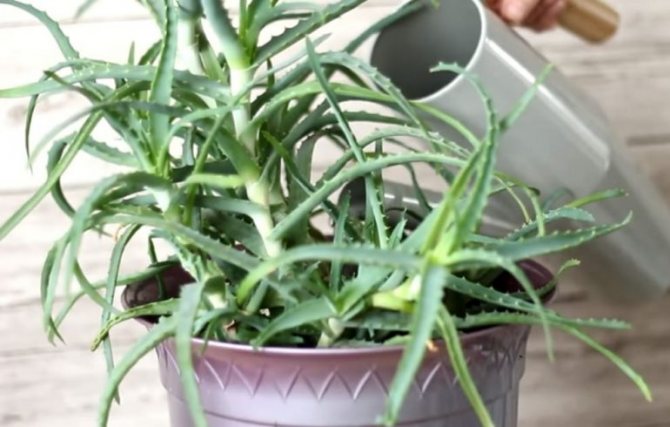

Agave watering process
Aloe liquid top dressing
Fertilizers are applied in liquid form, and there are a number of the following rules and recommendations:
- it is forbidden to spray fertilizer of any kind on the leaves, this will only harm the plant, for example, it will become a prerequisite for the development of the disease;
- after transplanting into fresh soil, feeding and fertilization is not performed for about six months, the same applies to recently rooted shoots. If the aloe was purchased, then it is recommended to fertilize the soil no earlier than a month after the flower was brought into the house;
- if the plant is planted in a nutritious substrate or soil with fertilizer already contained, no fertilizing is needed;
- any fertilizer is applied only after abundant watering. On a dry lump of earth, application is prohibited due to a too high concentration of the substance in the soil and a possible burn of the root system;
- diseased plants are not fertilized until diseases are identified and eliminated;
- it is not recommended to use mineral supplements if the plant is used for therapeutic or cosmetic purposes.


Fertilizer for aloe
If the flower is healthy, there is no risk of harming the plant, then it is advisable to make liquid (diluted in water) dressings for cacti or succulents at intervals of two to four weeks in the warm season, namely, from early May to early September. In winter, the plant is dormant and does not require fertilization.
The mineral additive is diluted with water according to the instructions on the package, after which it is added through a pallet or from above from a watering can. Beware of flooding the flower rosette.
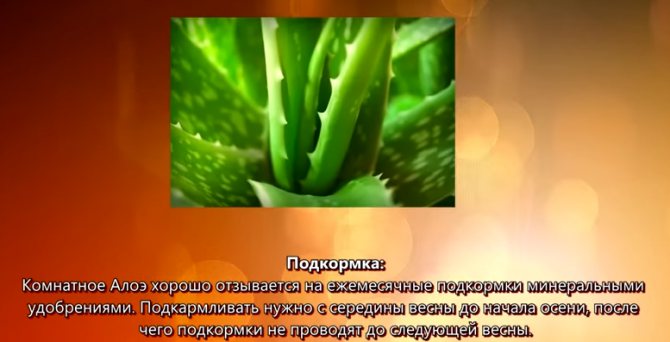

Aloe top dressing
If the plant is affected by scale insects, no fertilizing is applied. Treatment is carried out with a mixture of crushed garlic with shavings of soap (no fragrances) and a little water. The resulting gruel is used to wipe the aloe leaves. Such a mixture is not introduced into the ground.
Insecticides are used to treat mealybugs. The healing solution is applied to the leaves with a cotton swab. In case of severe damage to the plant, the insecticide is sprayed from above.
On a note! Plants after application of insecticides are not used for cosmetic and therapeutic purposes.

